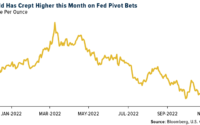How Big is the US Housing Bubble? – MishTalk
On August 28, I addressed the question “How Big is the Housing Bubble”. Here’s another take based on Hourly Wages, Rent, and the CPI

Home prices as measured by Case-Shiller repeat sales of the same home have surged vs average hourly earnings, the CPI, and rent.
Chart Notes
- Average hourly earnings are for production and nonsupervisory workers, not all workers. The data series for all workers does not go back far enough.
- The most recent Case-Shiller data is for May 2023. The other numbers are through July.
- Case-Shiller measure repeat sales of the same home over time. It is the most accurate measure because median and average prices do not factor amenities, the number of rooms, or quality of construction.
For at least 12 years, Case-Shiller, rent, average hourly earnings, and the CPI all rose together. Home prices then disconnected compared to everything else.
On August 28. I asked How Big is the Housing Bubble?
Based on Real Disposable Income, I calculated home prices were about 80 percent too high. Real means adjusted for inflation, and disposable means after tax. I used that methodology because for at least 12 years, home prices and real incomes rose together.
There are a couple of problems with my previous calculation. The first is that disposable income is not the best metric for comparison purposes. It includes food stamps, Social Security, Medicare, Medicaid, as well as interest, dividends, and rental income.
The average person does not collect rent, nor does the average person collect Social Security or have much dividend or interest income.
The second problem is that I compared real incomes to nominal home prices. This post compares nominal home prices vs nominal measures of hourly earnings, rent, and the CPI.
May 2006 Bubble Numbers
- Case-Shiller Housing Index: 185
- Average Hourly Income Index: 121
- CPI Index: 119
- Rent Index: 124
May 2006 Case-Shiller Percentage Above Hourly Income, CPI, and Rent Indexes
- Hourly Income: 52.9 Percent
- CPI: 55.5 Percent
- Rent: 49.2 percent
Current Bubble Numbers
- Case-Shiller Housing Index: 305
- Average Hourly Income Index: 211
- CPI Index: 180
- Rent Index: 221
Current Case-Shiller Percentage Above Hourly Income, CPI, and Rent
- Average Hourly Income Index: 44.5 Percent
- CPI: 69.4 percent
- Rent: 38.0 percent
Bubble Comparison Range
- May 2006: 49.2 percent to 52.9 percent
- Current: 38.0 percent to 69.4 percent
Price above rent is a flawed justification, but it does help explain the recent bubble. Rent was rising so fast that it pushed many into buying a house they are now tied to.
Importantly, Case-Shiller only includes the base house price. It does not factor in property taxes or insurance.
Home prices are now 69.4 percent more than where they would be if they rose at the same rate as the CPI. They are 44.5 percent above hourly income.
In May of 2006, home prices were 55.5 percent above the CPI index and 52.9 percent above hourly income.
Factor in property taxes and insurance into the current Case-Shiller price index and where are you?
Also consider student loan payments that will eat up 5 percent of income. For discussion, please see The Complicated Mess to Restart Student Loan Payments Is On Purpose
Finally, 61 Percent of US Workers Live Paycheck to Paycheck, 21 Percent Struggle With Bills
With mortgage rates above 7.0 percent, housing rates to be weak for a long time.
[ad_2]
Source link


